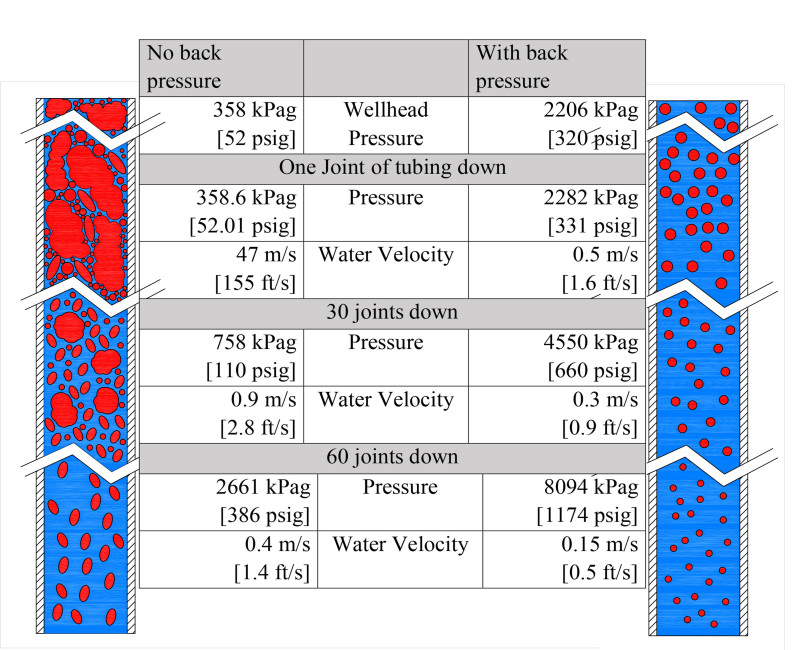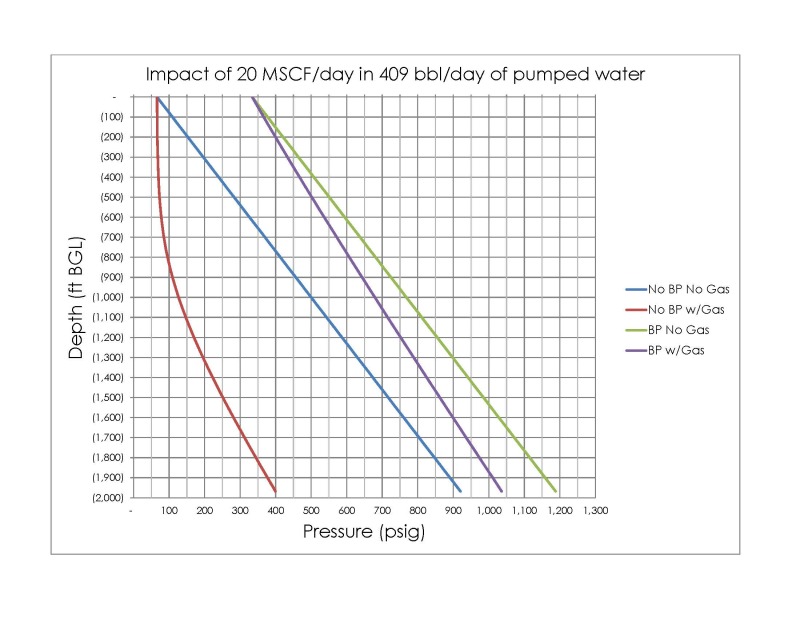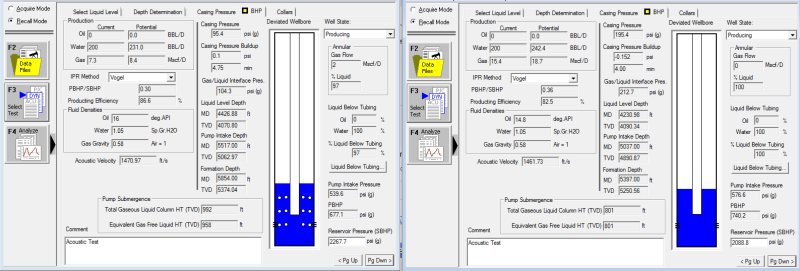Hello everyone!
I've been working on a project to evaluate the effects of tubing back pressure to deal with gas interference in sucker-rod-pumped wells.
Before the Back Pressure Regulator (BPR) was installed, the well was pumping around 28 BOPD and 41.3 MSCF (1475 GOR) with a 57% volumetric efficiency, after the valve was installed (set at 200 psi but tubing pressure increased up to 400 psi and has been oscillating between 350-400) oil production increased to 40 BOPD but gas production dropped to 10.3 MSCF (258 GOR) and volumetric efficiency ranges from 55 to 64%. Since the back pressure is merely keeping gas bubbles in solution I was expecting at the very least for gas production to be constant and for volumetric efficiency to increase. But volumetric efficiency remained sort of constant whilst the gas production decreased. Although the oil production did indeed increase, can anybody explain what is going on?
Thanks in advance.
I've been working on a project to evaluate the effects of tubing back pressure to deal with gas interference in sucker-rod-pumped wells.
Before the Back Pressure Regulator (BPR) was installed, the well was pumping around 28 BOPD and 41.3 MSCF (1475 GOR) with a 57% volumetric efficiency, after the valve was installed (set at 200 psi but tubing pressure increased up to 400 psi and has been oscillating between 350-400) oil production increased to 40 BOPD but gas production dropped to 10.3 MSCF (258 GOR) and volumetric efficiency ranges from 55 to 64%. Since the back pressure is merely keeping gas bubbles in solution I was expecting at the very least for gas production to be constant and for volumetric efficiency to increase. But volumetric efficiency remained sort of constant whilst the gas production decreased. Although the oil production did indeed increase, can anybody explain what is going on?
Thanks in advance.



